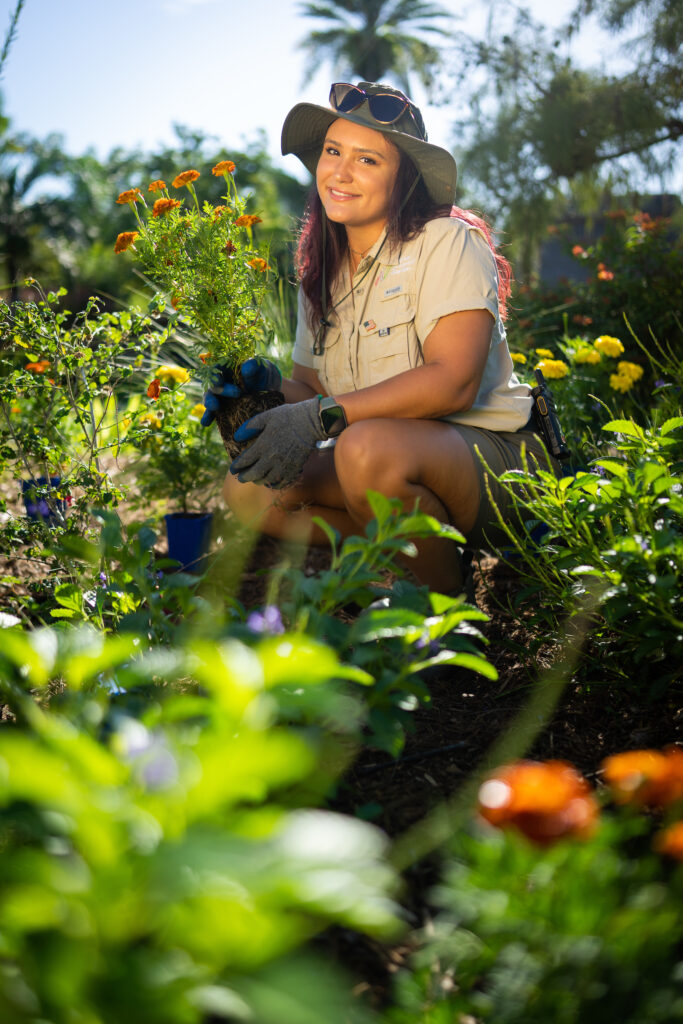FGCU’s blossoming relationship with the Naples Botanical Garden
- Drew Sterwald
- The Water School at FGCU
- Contributors: Photos: James Greco; Drone Footage: Naples Botanical Garden
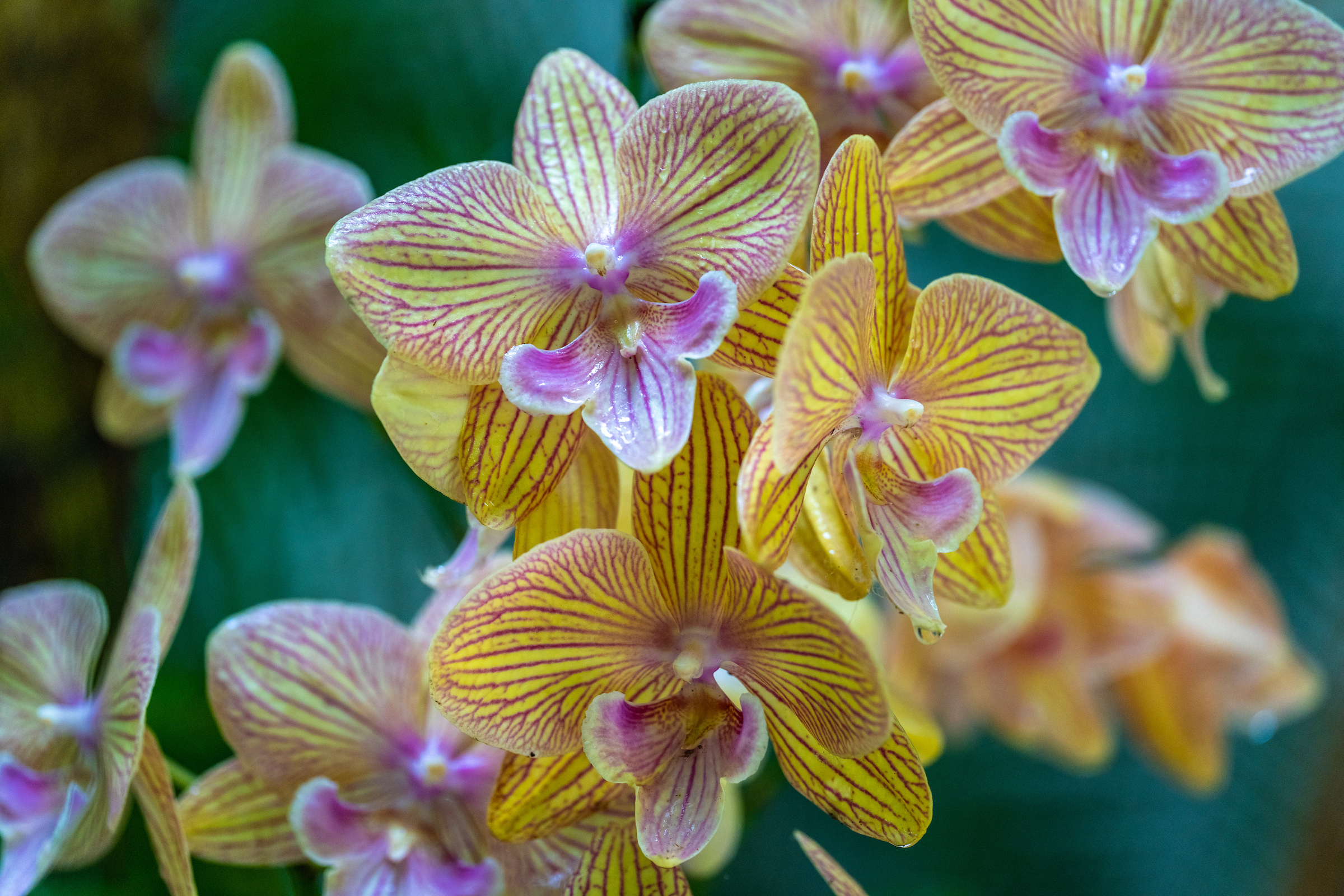
Banana, papaya and pineapple plants aren’t the only things bearing fruit at the Naples Botanical Garden. A mutually beneficial relationship between the garden and Florida Gulf Coast University has taken root, yielding jobs in a variety of roles for a crop of Eagle alumni.
For some, a class in FGCU’s Harvey Kapnick Research and Education Center, which opened at the garden in 2010, may have sown the seed. For others, service-learning hours, undergraduate internships or graduate practicums cultivated career-starting connections.
Garden staff estimates at least 20 of the 197 current employees are Green and Blue alumni, many of them in roles key to the institution’s mission. They conserve rare seeds and plants, manage preserved native habitats, coordinate collaborations with other botanical gardens and develop educational programs that inform and entertain 260,000 annual visitors.
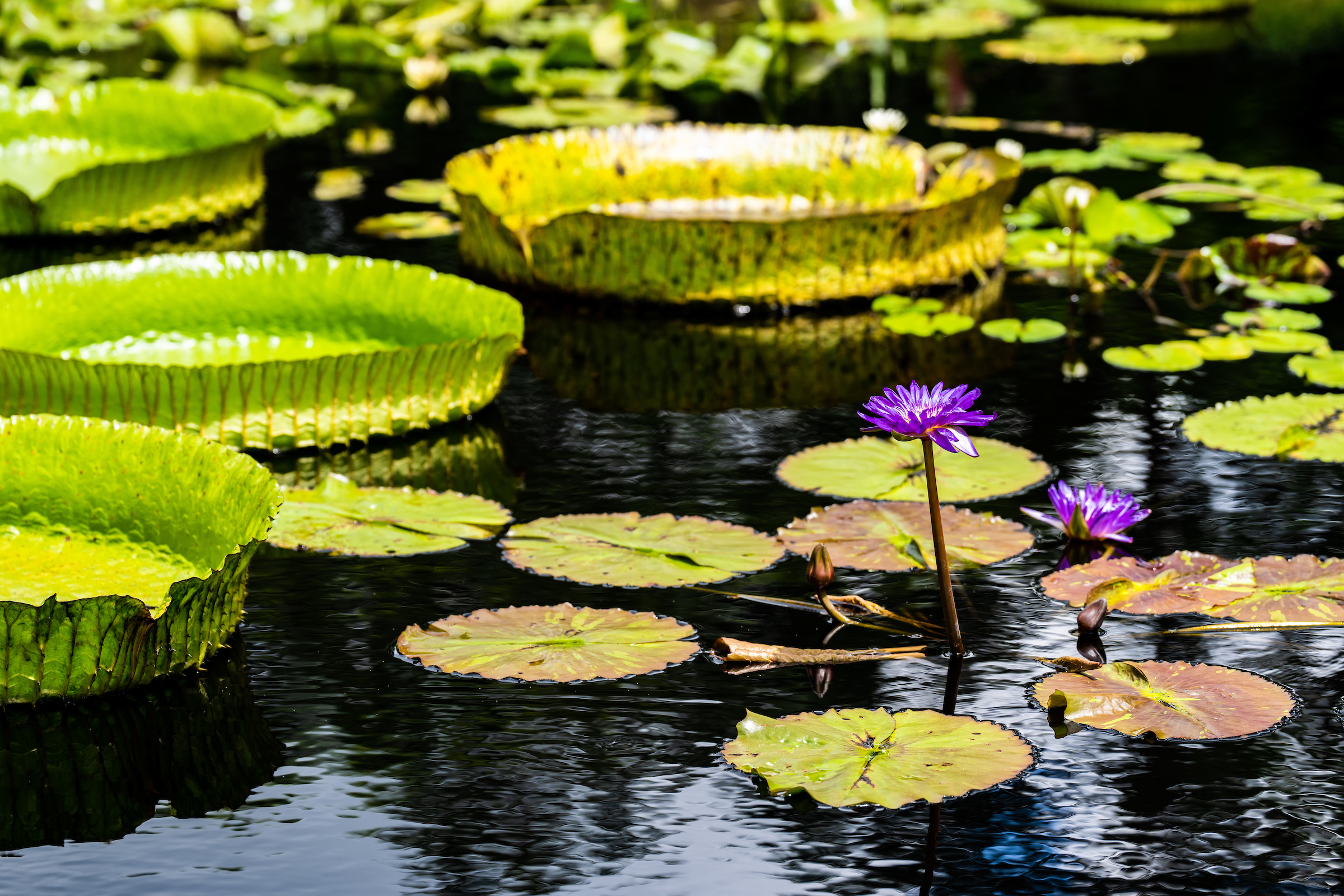
“There’s a great alignment between FGCU and the Naples Botanical Garden,” said Kathy Connelly, vice president and chief of staff of the garden, which opened its gates in November 2009 in East Naples. “We’re both kind of in that nimble state where we can adapt and try new things and do things differently. It just created a great connection. There are lots of opportunities here for anyone who graduates from FGCU. We are so blessed to have such a great team, and we can thank FGCU for preparing them well.”
In the wake of Hurricane Ian, many of these Eagles, who are now garden employees, pitched in to clear plant debris from paths, right tilted trees and hose down plants licked by the saltwater surge that flooded some garden sections. Ian’s damage to the garden was not as catastrophic as Hurricane Irma’s five years ago, according to the garden’s website.
Nevertheless, horticulturist and 2019 FGCU grad Miralny Marante felt sad when she returned to work Oct. 3 and saw a giant kapok down at the garden entrance. Trees were stripped bare of leaves, which were plastered all over the grounds. A favorite tabebuia, known for its lavish lemon-colored blooms, was blown over. After two weeks of pruning damaged limbs and sweeping up debris, things started to look brighter.
“A lot of trees are flushing out new growth already – I didn’t expect that,” Marante said in mid-October. “It’s amazing how fast they come back. There’s so much sunlight in the garden right now, with the lost canopy. The plants are really using the sunlight – it’s like Red Bull for them.”
Marante, who joined the garden staff in 2020, is just one Eagle alum among recent hires and even a long-timer who joined while the first plantings were taking root. Here’s a look at how some alumni have blossomed in the garden.
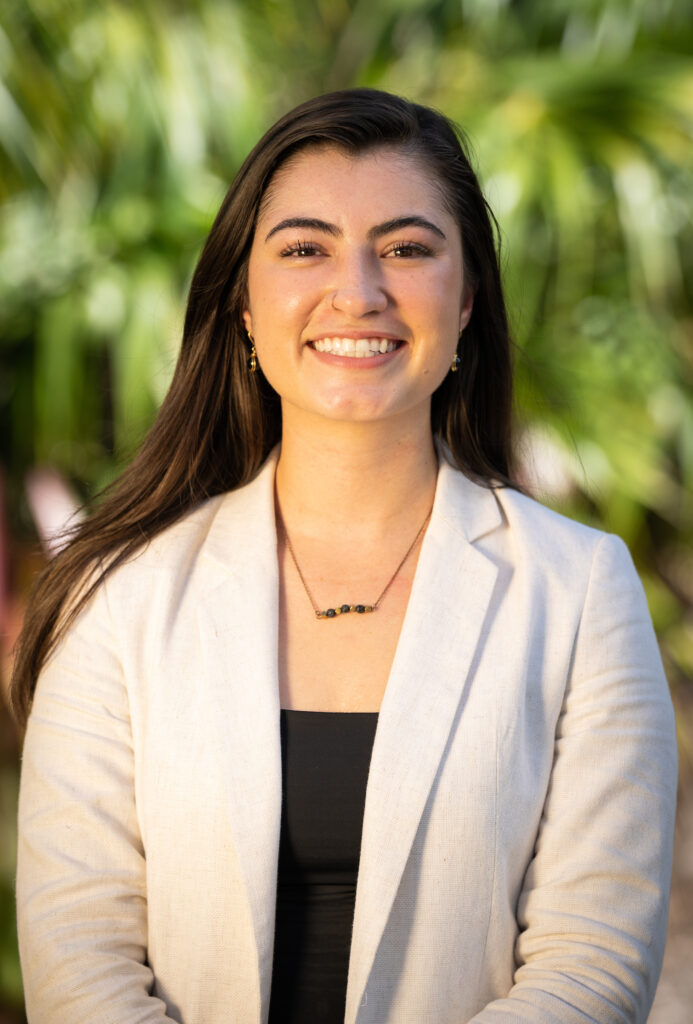
Lina Ramirez
2019, Environmental Studies and Communication Studies; 2022, Environmental Studies Master’s Regional Conservation Initiatives Coordinator
Lina Ramirez’s education and experiences at FGCU laid the groundwork for her to become one of the Naples Botanical Garden’s latest Eagle alumni hires in August.
Conducting undergraduate research with associate professor Kara LeFevre of The Water School led to helping LeFevre organize a conference on harmful algal blooms – a project marrying Ramirez’s passions for the environment and communicating effectively about science. As a graduate student, she continued coordinating such events, including a panel discussion of international speakers that the botanical garden hosted at FGCU. This connection turned into an opportunity for Ramirez to do her master’s practicum at the garden coordinating virtual “technical talks” where conservation professionals disseminate research that is recorded and shared with the public. That led to her full-time job, a joint position with the Botanical Gardens Conservation Initiative, a London-based international network of gardens.
“The moral of the story is, whenever a professor asked for help with something, I said yes,” Ramirez said. “My advice to students is become involved. Don’t be afraid to try a lot of different things, even if you’re just helping another student with research. You never know when you’re going to get an opportunity that could connect to something else.”
For her, that something else is coordinating conservation initiatives with the garden’s partners in the Caribbean and Central America, where botanical collections and arboretums have climates and soils similar to Naples. These collaborators share research, living plant material and conservation strategies to safeguard the future of threatened species. One recent project involved collecting seeds from fungus-ravaged native cacti in Puerto Rico so they could be conserved for the future.
“Protecting the environment isn’t just about science. It’s also about communication, education, relationship building,” said Ramirez, whose family emigrated from Colombia when she was 5. “I knew I wanted to do something where I could utilize the different skills I have in environmental science and communication. I speak Spanish and have gained a lot of cultural knowledge from traveling. I didn’t know how to coalesce it all together until this position came along.”
Ramirez wasn’t sure what her dream job was when she started her practicum at the garden. “Now I know,” she said.

Eric Foht
2003, Environmental Studies
Director of Natural Resources
A little more than half of the Naples Botanical Garden’s 170 acres is dedicated to native Southwest Florida flora and habitats threatened by climate change, invasive species and land development throughout the state. The Preserve, as this part of the garden is called, is home to nearly 257 species of native plants, many of them rare, including 41 that are not known to exist in any other collection. These 90 acres showcase diverse ecosystems, including marsh, coastal scrub and pop ash swamp, and it’s Eric Foht’s responsibility to ensure their survival.
“It’s difficult to protect one plant – a plant is part of an ecosystem,” said Foht, whose typical day may include hand-pulling invasive weeds or monitoring the garden’s stormwater-management system. “The real message is to protect habitats as a whole, or else what’s the value of having one plant?”
Scrub land, for instance, is becoming rare in Southwest Florida, he said, particularly because this higher, drier coastal habitat appeals to developers. Visitors to the botanical garden can explore a few acres of scrub that conserve typical plants such as myrtle oak, Florida rosemary and sand spikemoss.
“The name scrub doesn’t sound very glamorous, but I happen to love the look and the feel of the habitat,” Foht said. “It’s worth protecting. A lot of these species only occur in this habitat, and if no one is saving the seeds anywhere, this habitat will be lost.”
“Backing up” certain species in seed banks here and around the world is a critical part of the botanical garden’s work. In fact, another FGCU alum, Jessica DeYoung (’18, Environmental Studies), has played a vital role in developing, testing and cultivating seeds since she joined the staff in 2018.
When Foht was hired in 2009, the first phase of garden construction was still underway, so he helped cultivate some of the original plantings. His previous job was at Rookery Bay National Estuarine Research Reserve, a frequent collaborator with the botanical garden. Rookery Bay also was the location of a particularly inspiring excursion he had taken as an undergraduate with FGCU faculty.
“Some of those field trips were really influential and impactful,” he said. “Part of the point of the environmental studies program is that it gives students the experience of being in these places they’re reading about in their books.”

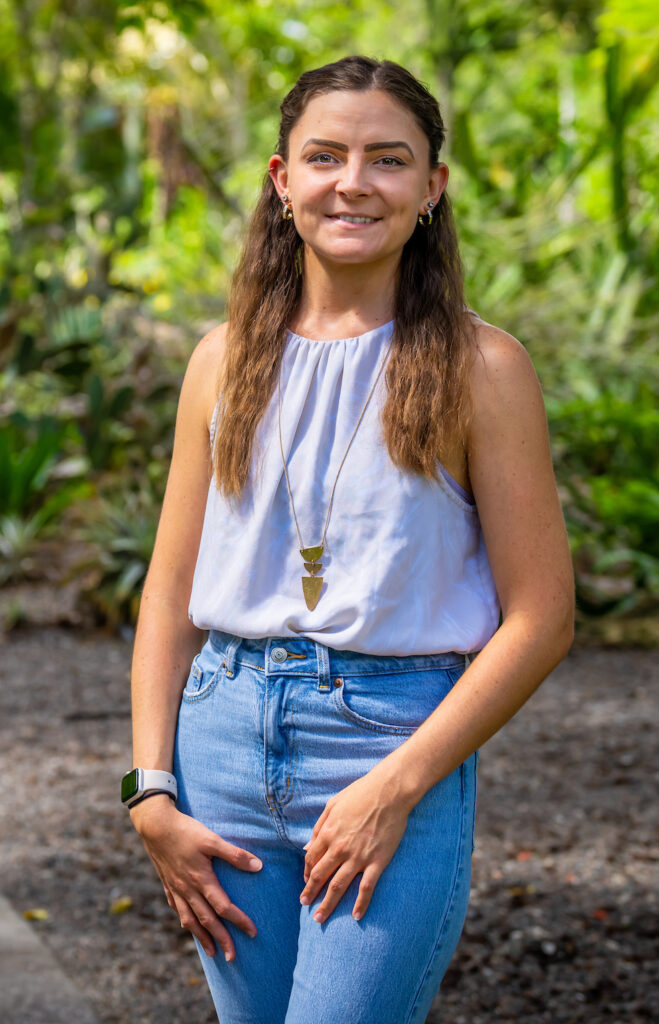
Kaitlyn Dillard
2017, Environmental Studies
Education Programs Coordinator
Along with conservation and research, education for all ages is key to the mission of the Naples Botanical Garden. After completing a student internship there in 2017, Kaitlyn Dillard joined the staff as youth programs director and was promoted to education programs manager – a career path that seemed destined since her youth.
“I grew up outside,” she said. “Our family had an interest in gardening and the environment. Having that type of lifestyle developed my own interest in caring for the environment, understanding where food comes from and how food production impacts the environment – different facets of environmental studies.”
Now, Dillard helps cultivate knowledge and connections to the environment by leading a team of educators who present observational and hands-on programs geared to children and adults, individuals and groups. She works with school districts to develop interactive activities that help students meet plant science benchmarks that are challenging to meet in classrooms. “Budding Botanist,” for example, gives visiting fourth graders the chance to dissect flowers, examine seeds to understand how they’re dispersed and learn about pollinators.
Many elementary school students have never been to a local beach or a park near their homes, Dillard said. Getting them outdoors and engaged in fun learning opportunities helps them develop scientific observation and writing skills.
“I like connecting people in the garden and giving them an experience that further creates a positive behavior change for the environment, for the greater good,” she said. “You see a look in their eyes when they learn something new they can incorporate in their lives. Making an impact like that is really rewarding. Honestly, this is the best job I’ve ever had.”

Miralny Marante
2019, Marine Science
Horticulturist
FGCU’s “University Colloquium” class provided Miralny Marante’s first connection to the Naples Botanical Garden. Not long after that field trip, she began volunteering in the horticulture department – planting the seed for a full-time opportunity that came to fruition in 2020 after the COVID-19 pandemic forced her out of another job.
“Before I was hired, I didn’t know a lot about plants, but I have learned so much in two years about different species, pests, herbicides – basically garden maintenance,” she said. “I’m still learning things every day, and some of the biology and environmental courses I took at FGCU, even marine science, are still helping me here.”
Marante is deepening her education by pursuing a Florida Nursery, Growers and Landscape Association certification. She enjoys sharing her knowledge with visitors while working in the Karen and Robert Scott Florida Garden – one of several dedicated gardens within the property. Some days they find her knee-deep in a stream, pulling weeds. Other days she mulches and grooms plant beds, prunes trees and shrubs and inspects plants for problems like leaf scorch or nitrogen deficiency.
“What’s that plant?” is a question she answers a lot. Every day. She especially enjoys talking up the Florida wildflowers blossoming around her.
“I love the dune sunflower. A lot of people don’t know we have a native sunflower in Florida,” Marante said. “Our native wildflowers are sometimes the tiniest little things. You have to have an eye for them because when you’re on a hike, it can feel like you’re in a jungle.”
The best part of her job, though, is just being outdoors every day, Marante said, noting the birds, reptiles, otters and other wildlife she spots. The Florida Garden sits at the property’s highest point, so she has a panoramic view in all directions.
“I get a lot of satisfaction from taking care of this garden,” she said. “I feel like I’m on vacation every day.”
